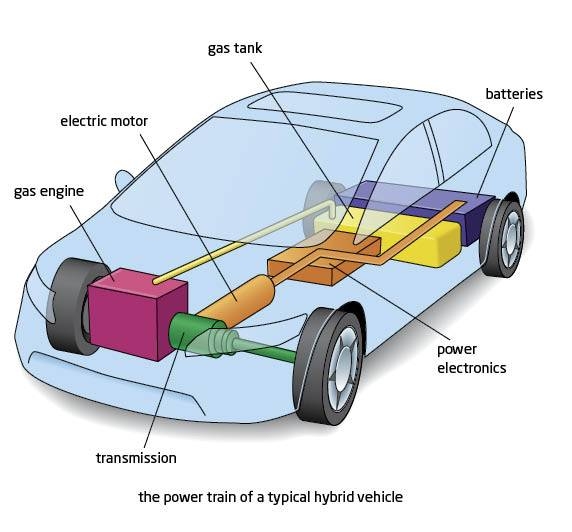
With the concerns over fossil fuel shortages and rising prices has come the need for more fuel efficient vehicles. Hybrid-electric vehicles (HEV) are a most recent invention that combines the gasoline engine with an electric motor. These models are innovative as well as customizable in that the design can be configured for different purposes. Improved fuel economy, added auxiliary power, and increased horse power are some of the possible configurations.
Hybrid electric designs are made up of a gasoline engine, a fuel tank, an electric motor, a generator, batteries and a transmission. The electric motor, generator and batteries all work on behalf of the hybrid concept. Motors not only help power the car, but can also act as generators, which means they can draw energy from the batteries, as well as return energy back to the batteries. The generator itself works solely to produce electrical power, while the batteries are where energy for the electric motor is stored.

What differentiates the HEV from that of an electric car is the electric motor in the HEV is recharged by the excess energy put off by the gasoline engine, while electric cars must be plugged into an electrical source in order to recharge. Granted, gasoline is still used for most of the car's power. What the electric motor does is provide additional power for accelerating and passing, which makes for a more efficient engine that takes up less space.
HEV's make use of advanced technologies, some of which include electric motor drive-assist, automatic start and shutoff, and regenerative braking. Electric motor drive-assist is the added boost provided by the electric motor on an as-needed basis. Automatic start and shutoff occurs whenever the car comes to a stop, like at a stoplight. The car shuts off when stopped, then restarts when the accelerator is pushed. Regenerative braking is the technology that uses the excess energy generated when the motor applies resistance to the drivetrain as the brakes are applied. This excess energy is instead regenerated by the electric motor and stored for later use.

Hybrid engine designs typically come in one of two types: a series hybrid and a parallel hybrid. With the series design, the sole purpose for the gasoline engine is to turn a generator. The generator will then either power the electric motor which drives the transmission, or charge the batteries. Parallel designs are set up so that both the gasoline engine and the electric motor are connected to the transmission, meaning both sources power the vehicle.
HEV designs are based on a small engine concept that allows for a smaller gasoline-powered system, meaning less weight, and so less fuel consumption. Less cylinders are required to power the vehicle which reduces vehicle weight, as well as requiring less gas as there are fewer cylinders. As a result of the smaller engine and more efficient use of power and energy, hybrid cars consume less gas per mile driven.
